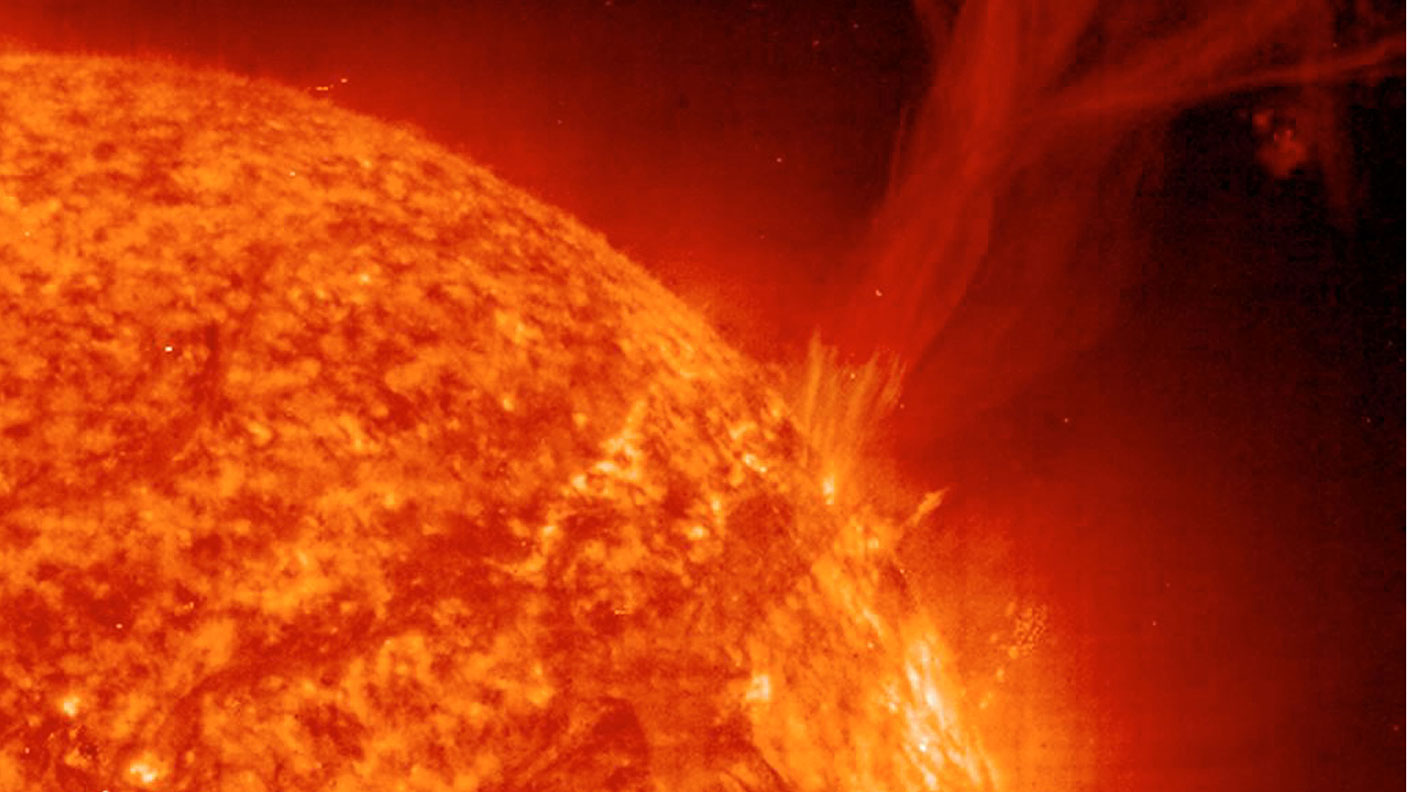1 September 1859: the ‘Carrington Event’, the biggest solar storm ever recorded
On this day in 1859, a huge mass of magnetic particles erupted from the sun and hit the earth, knocking out telegraphs and putting on a spectacular display in the skies.

The morning of 1 September 1859 was lovely and sunny in the south of England. That was good news for amateur astronomer Richard Carrington, who had a particular fondness for observing the sun. That day, he went up to his private observatory, pointed his telescope at the sun, and began to sketch the sunspots. What he saw next got him very excited indeed.
"Two patches of intensely bright and white light broke out" of the sun, wrote Carrington, and hurled invisible particles towards the earth. It didn't take long for the particles to smash into our magnetic field and light up the skies. That night, bright red and green auroras could be seen as far south as Cuba.
The “Carrington Event”, as it came to be called, was the biggest solar storm ever witnessed. It created huge electrical surges that sent sparks flying from new-fangled telegraph machines, in some cases setting the telegraph paper on fire. Operators disconnected their machines from their batteries, but found they could still communicate via the “power of the aurora”.
MoneyWeek
Subscribe to MoneyWeek today and get your first six magazine issues absolutely FREE

Sign up to Money Morning
Don't miss the latest investment and personal finances news, market analysis, plus money-saving tips with our free twice-daily newsletter
Don't miss the latest investment and personal finances news, market analysis, plus money-saving tips with our free twice-daily newsletter
We got a taste of how the world would cope now if such an event happened again (as it will – research suggests such a storm could occur as often as every 150 years) when in October 1989 a geomagnetic storm blew out the power grid in Quebec, plunging six million people into darkness.
In the US, between 20 million and 40 million people would be at risk of power cuts that could last from a couple of weeks to a couple of years. The costs to the US economy, estimated in 2013 by Lloyds of London, would be between $0.6trn and $2.6trn. Damage to the 900-odd satellites orbiting earth could cost between $30bn and $70bn.
Thankfully, the power grid in the UK is more resilient than in many parts of the world, according to the UK's Space Weather Preparedness Strategy. But we could still face “two to four months of disruption to power supplies”.
Get the latest financial news, insights and expert analysis from our award-winning MoneyWeek team, to help you understand what really matters when it comes to your finances.
Ben studied modern languages at London University's Queen Mary College. After dabbling unhappily in local government finance for a while, he went to work for The Scotsman newspaper in Edinburgh. The launch of the paper's website, scotsman.com, in the early years of the dotcom craze, saw Ben move online to manage the Business and Motors channels before becoming deputy editor with responsibility for all aspects of online production for The Scotsman, Scotland on Sunday and the Edinburgh Evening News websites, along with the papers' Edinburgh Festivals website.
Ben joined MoneyWeek as website editor in 2008, just as the Great Financial Crisis was brewing. He has written extensively for the website and magazine, with a particular emphasis on alternative finance and fintech, including blockchain and bitcoin.
As an early adopter of bitcoin, Ben bought when the price was under $200, but went on to spend it all on foolish fripperies.
-
 31 August 1957: the Federation of Malaya declares independence from the UK
31 August 1957: the Federation of Malaya declares independence from the UKFeatures On this day in 1957, after ten years of preparation, the Federation of Malaya became an independent nation.
-
 13 April 1960: the first satellite navigation system is launched
13 April 1960: the first satellite navigation system is launchedFeatures On this day in 1960, Nasa sent the Transit 1B satellite into orbit to provide positioning for the US Navy’s fleet of Polaris ballistic missile submarines.
-
 9 April 1838: National Gallery opens in Trafalgar Square
9 April 1838: National Gallery opens in Trafalgar SquareFeatures On this day in 1838, William Wilkins’ new National Gallery building in Trafalgar Square opened to the public.
-
3 March 1962: British Antarctic Territory is created
Features On this day in 1962, Britain formed the British Antarctic Territory administered from the Falkland Islands.
-
10 March 2000: the dotcom bubble peaks
Features Tech mania fanned by the dawning of the internet age inflated the dotcom bubble to maximum extent, on this day in 2000.
-
9 March 1776: Adam Smith publishes 'The Wealth of Nations'
Features On this day in 1776, Adam Smith, the “father of modern economics”, published his hugely influential book The Wealth of Nations.
-
 8 March 1817: the New York Stock Exchange is formed
8 March 1817: the New York Stock Exchange is formedFeatures On this day in 1817, a group of brokers moved out of a New York coffee house to form what would become the biggest stock exchange in the world.
-
7 March 1969: Queen Elizabeth II officially opens the Victoria Line
Features On this day in 1969, Queen Elizabeth II took only her second trip on the tube to officially open the underground’s newest line – the Victoria Line.



